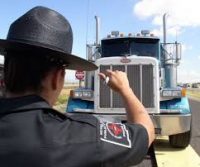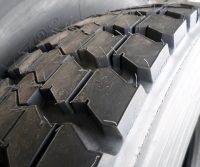
Have you ever said to yourself, “I’ll do a pre-trip inspection next week when I have more time?” Did you get that nagging feeling in the pit of your stomach that you should perform it daily as you’re supposed to? If so, read the story below from CCJ Commercial Carrier Journal – Fleet Management Magazine:
FMCSA Shuts Down Small Reincarnated Carrier
Daya Trucking, a Georgia-based 39-truck fleet, has been effectively shut down by the Federal Motor Carrier Safety Administration for reincarnating after being given an “Unsatisfactory” safety rating in 2017. According to FMCSA, Daya was formerly known as Ekam Truck Line. In 2017, Ekam agreed to enter a Consent Order in order to upgrade its safety rating from Unsatisfactory to Conditional. The fleet’s Unsatisfactory rating was the result of a number of safety violations, FMCSA says. The Consent Order required Ekam to take specific actions to improve safety, however, the company performed none of these actions, FMCSA adds, and instead evaded the order by applying for U.S. DOT registration as Daya Trucking. Following an investigation, FMCSA reinstated Ekam’s Unsatisfactory rating and merged and consolidated the safety and enforcement records of Ekam and Daya.
Vehicle Maintenance Violations
In the past 12 months, Daya vehi-cles had been placed out-of-service at a rate of 46 percent and cited for:
1. inoperable lamps
2. exposed tire fabric
3. defective brakes
4. broken or missing axle position components
5. oil or grease leaks from hubs
6. Failing to ensure drivers were properly licensed
7. Investigators found where five drivers without a current CDL or in possession of a suspended CDL had been dispatched
Source: CCJ Commercial Carrier Journal – Fleet Management Magazine

The tread depth for your tires are as follows:
4/32” on Steers
2/32” on Drives and Trailers
** By the time your drivers see 2/32” on their tire, there are other places where that tire is 0/32”!
When your tire’s tread depth is 6/32” it is time to start thinking about getting the tire replaced. Re-treading the tires will ensure that you do not go past your limit and will save you money on tires and tire failures. When re-treading tires, the tire surface is buffed off and a new tread is pressed on with a very intense adhesive, essentially melding the two pieces into one.
A common misunderstanding about tires that have been re-treaded is that they are the tires you see blown out on the side of the road. This could not be further from the truth. The blown-out tires you see are actually virgin tires that were low on air. The tire heated up and then blew. One way to tell it is not the tread is that you will see the steel cords/belts in the scrap pieces on the road. What, essentially, happens is the tire is low on air causing additional flex in the tire, constantly flexing the steel cords. For instance, if you take a pop can and continually flex it, it will eventually get extremely hot and crack at that spot. The steel cord then heats up and causes the rubber to begin to melt and the tire to lose pressure even further. One tire failure can cost over $500 on the side of the road, not to mention the cost for your drivers to sit and wait for a road call.
Wisconsin Truck & Boom Repair is here to help. We are a Michelin tire dealer and we have teamed up with Bauer Built Tire to service you better. LET US HELP YOU SAVE MONEY! Follow a routine daily truck inspection that includes checking your tire pressure and tread depth. When you are ready for tires, we can install your new tire and send your old one out for re-treading.
“A common misunderstanding about tires that have been re-treaded is that they are the tires you see blown out on the side of the road.
This could not be further from the truth.”
